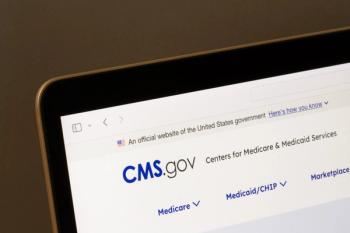
- Drug Topics September/October 2024
- Volume 168
- Issue 07
Examining Barriers to Assessing and Treating Pain in Pediatric Patients
Although there has recently been an effort to improve pediatric pain treatment, it is still often underestimated and not adequately managed.
Pain is a universal experience. The sensation is an important signal the body uses to warn us that something is wrong, from cancer to simply touching a hot stove. Three primary patterns of pain are recognized based on duration and frequency—acute, episodic, and chronic—and all present unique challenges when it comes to treatment.1
In adult populations, treating pain comes with its share of difficulties, but there has been plenty of research describing varied approaches. However, much less is known regarding pain in pediatric patients. Although there has recently been an effort to better understand pediatric pain, it is still often underestimated and not adequately managed. There are many reasons why this may be, including difficulty evaluating pain, a lack of knowledge about pain management, and unawareness or underreporting of pain by parents or caregivers.2
“I think that there is, maybe historically, this thought that [children] might be having pain right now, but they’re not going to remember it when they get older or that they’re just whining or tired,” said Madison Irwin, PharmD, BCPS, a clinical pharmacist specialist in palliative care at University of Michigan Health and a clinical assistant professor at the University of Michigan College of Pharmacy in Ann Arbor. “So, maybe we’re not necessarily taking seriously children’s pain. We’re probably not recognizing that the intensity and the duration of pain that pediatric patients experience can be quite a bit more intense and longer than adults because their nociceptive system is in the process of developing.”
Although it is difficult to determine the exact prevalence of pain in
Treating pain in pediatric patients can be difficult for several reasons. One of the most important factors when treating pain is conducting an assessment, which will determine the best form of treatment. However, this poses a barrier to care in younger patients, as they may not have the ability to measure the degree or verbally describe the location of their pain. When self-report is an issue, it is recommended that clinicians use validated age-related pain assessment tools, including observational-behavioral measures such as the Face, Legs, Activity, Cry, and Consolability scale and the Children’s and Infants’ Postoperative Pain Scale.5
“There are a lot of assessment skills to assess pain in children at various ages,” Irwin said. “I would say that there’s a lack of knowledge about those. Even with those assessment skills—they are there, they are helpful and should be utilized—you’re always going to run into some amount of challenge when having someone who’s unable to self-report. I think that there’s just generally a lack of knowledge by treating clinicians about pediatric pain and how to manage it.”
After pain is assessed, treatments will include nonpharmacologic therapies, pharmacologic medications, or both.
“We want to be utilizing the least painful or least invasive route of administration if we’re going to be administering medication,” Irwin said. “If we can use [drugs] that are oral, transdermal, topical, or nasal, that’s great. We [should try to] avoid intramuscular, intravenous, subcutaneous, and rectal, if at all possible. I think that’s an important place where pharmacists can step in to help guide some of that, especially in the setting of a community pharmacy, where there are different OTC products out there.”
READ MORE:
Don’t get left behind: Sign up today for our
References
1. Pain. National Institute of Neurological Disorders and Stroke. Updated July 22, 2024. Accessed September 9, 2024. https://www.ninds.nih.gov/health-information/disorders/pain#
2. Terrie YC. Managing pediatric pain. US Pharm. August 18, 2023. Accessed September 9, 2024. https://www.uspharmacist.com/article/managing-pediatric-pain
3. Miró J, Roman-Juan J, Sánchez-Rodríguez E,Solé E, Castarlenas E, Jensen MP. Chronic pain and high impact chronic pain in children and adolescents: a cross-sectional study. J Pain. 2023;24(5):812-823. doi:10.1016/j.jpain.2022.12.007
4. Abiezze C, Ranaraja A, Kilano R, Keane J, Mauro A, Goldstein L. Pediatric pain management: a review of clinical diagnosis and management. Pract Pain Manag. Updated June 18, 2020.Accessed September 13, 2024. https://www.medcentral.com/pain/pediatric-pain-management-review-clinical-diagnosis-management
5. Sansone L, Gentile C, Grasso EA, et al. Pain evaluation and treatment in children: a practical approach. Children (Basel). 2023;10(7):1212. doi:10.3390/children10071212
6. Rosen DM, Alcock MM, Palmer GM. Opioids for acute pain management in children. AnaesthIntensive Care. Published online February 16, 2022. Accessed September 13, 2024. https://journals.sagepub.com/doi/10.1177/0310057X211065769
Articles in this issue
about 1 year ago
FDA Approves Ceftobiprole Medocaril Sodium for 3 Indicationsabout 1 year ago
Supplement Snapshot: Vitamin D and Respiratory Tract Infectionsabout 1 year ago
The Perils of Frivolous Lawsuitsabout 1 year ago
OTC Product Roundup: Topical Analgesicsabout 1 year ago
Beyond Blood Glucose: Addressing Adolescent Diabetes Challengesabout 1 year ago
FDA Approves First-Ever OTC Hearing Aid SoftwareNewsletter
Pharmacy practice is always changing. Stay ahead of the curve with the Drug Topics newsletter and get the latest drug information, industry trends, and patient care tips.





















































































































































